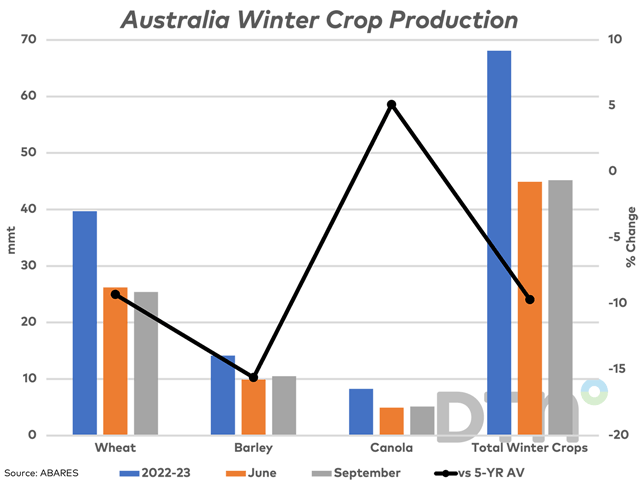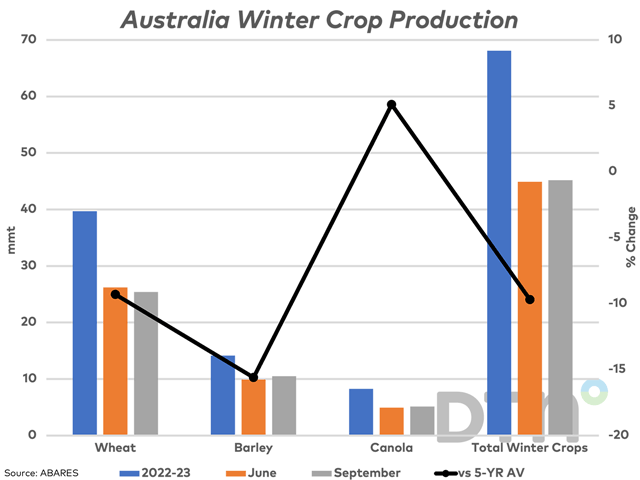Canada Markets
Australia's ABARES releases September Production Estimates
Australia's official Australian Bureau of Agricultural and Resource Economics and Sciences (ABARES) crop production estimates were released today. They showed a slight upward adjustment in winter crop production since their June estimate, while overall production remains sharply lower than the record crop produced in 2022 and the first plunge in production forecast following three consecutive record crops.
Total winter crop production was revised 300,000 metric tons (mt)higher at 45.2 million metric tons (mmt), down 33.6% from the previous crop year and 9.7% below the five-year average.
ABARES points to favorable conditions for southern growing areas of the country, while crops found in northern growing areas are facing moisture stress and are poised to end with below-average yields.
P[L1] D[0x0] M[300x250] OOP[F] ADUNIT[] T[]
The current El Nino event is a contributing factor, while ABARES notes "the extent to which it influences Australian rainfall and temperatures presents a key downside risk to the outlook."
Wheat production is estimated at 25.385 mmt, down from 26.212 mmt estimated in June, down 36% from last year and 9.3% below the five-year average. In August, the USDA World Agricultural Supply and Demand Estimates (WASDE) report estimated production at 29 mmt, so look for a downward revision to both Australian and Canadian production when the USDA reports this month.
Australia's canola production was estimated at 5.151 mmt this month, which is a modest upward revision from the June estimate, down 37.7% from last year and 5.1% above the five-year average.
Like barley and canola, where forecast production was revised slightly higher this month, the forecast for lentil production was revised from 906,000 mt in June to 1.228 mmt this month. Lentils are grown mostly in South Australia and Victoria, southern areas which are faring better. While this volume is 27.2% below last year's production, it is 38.7% higher than the five-year average.
Cliff Jamieson can be reached at cliff.jamieson@dtn.com
Follow him on X, formerly known as Twitter, @Cliff Jamieson
(c) Copyright 2023 DTN, LLC. All rights reserved.






Comments
To comment, please Log In or Join our Community .